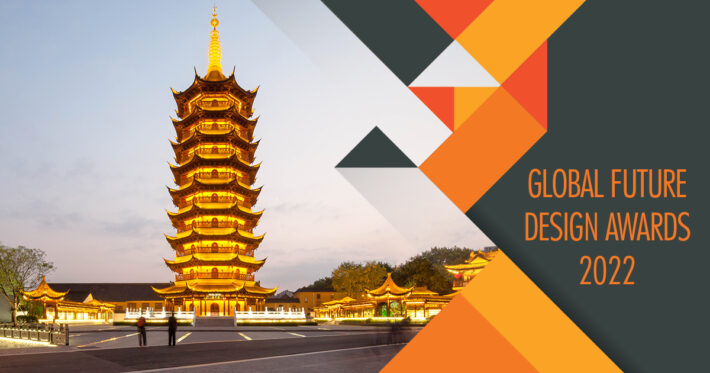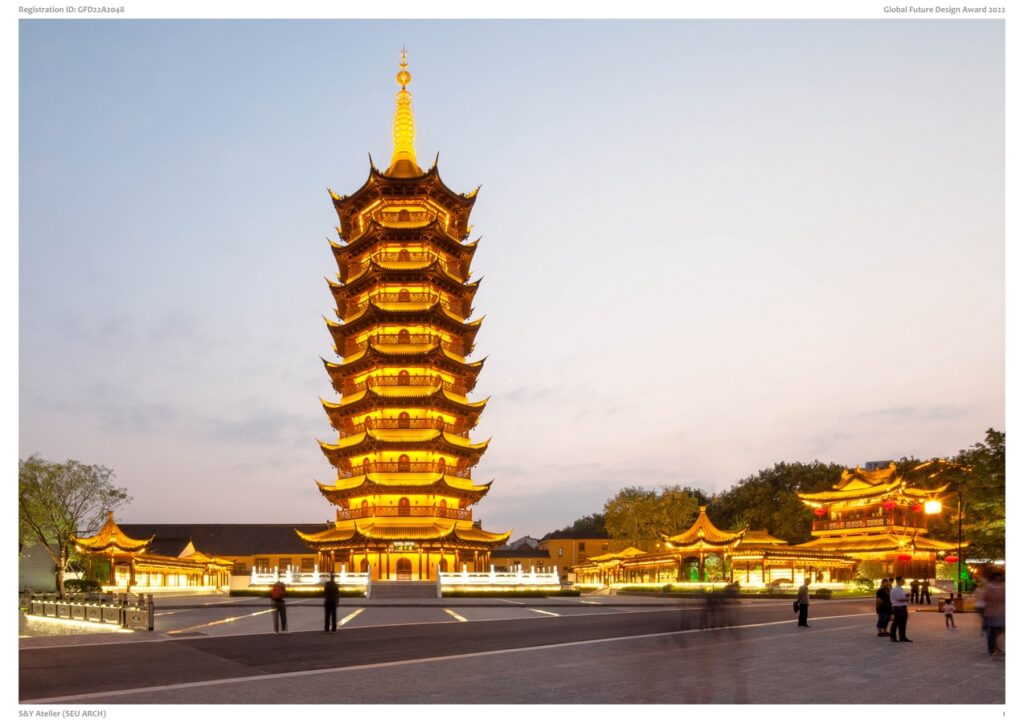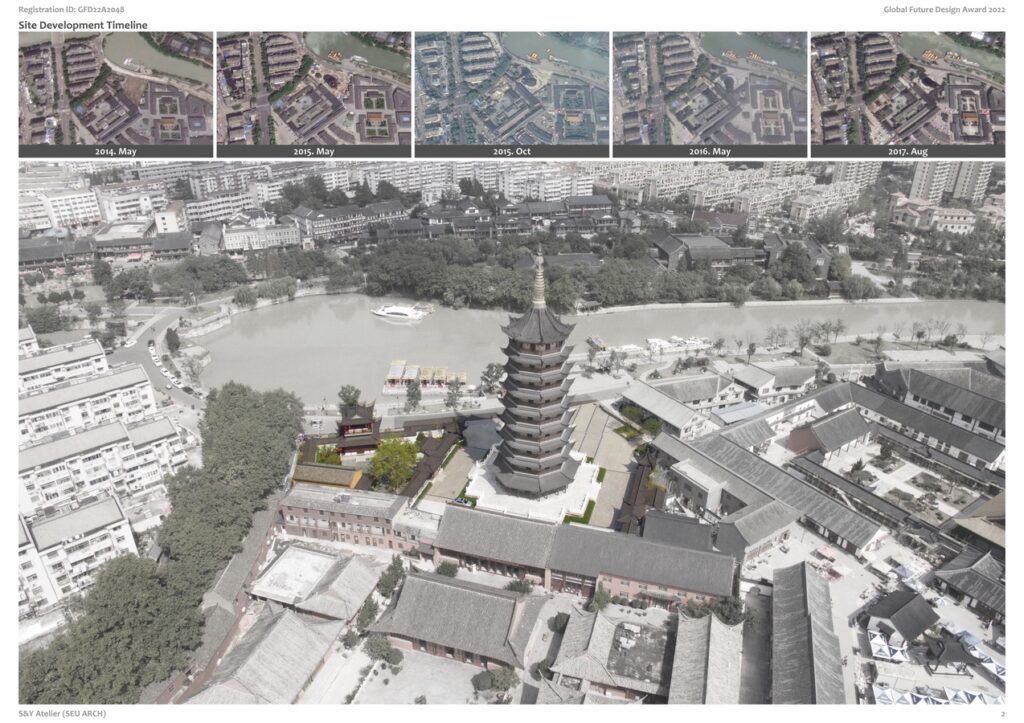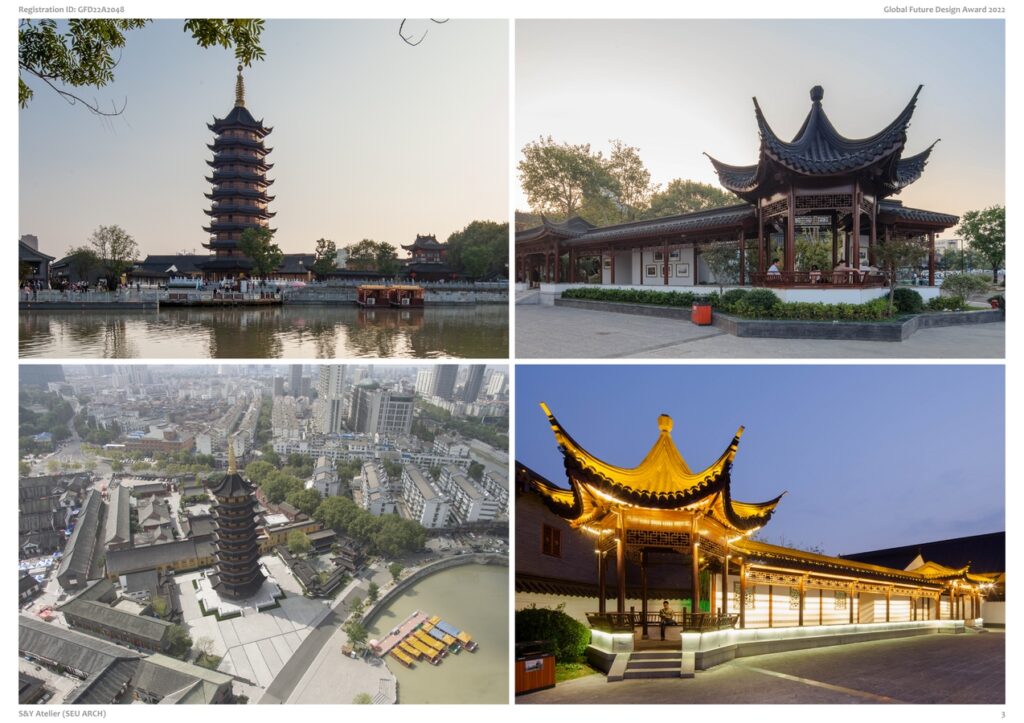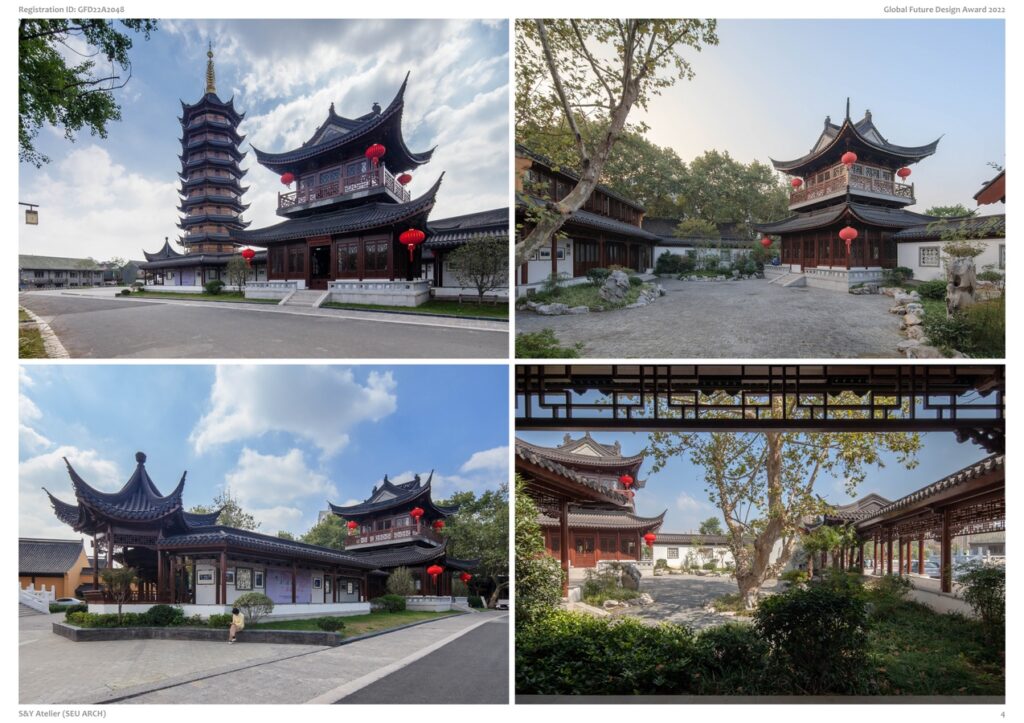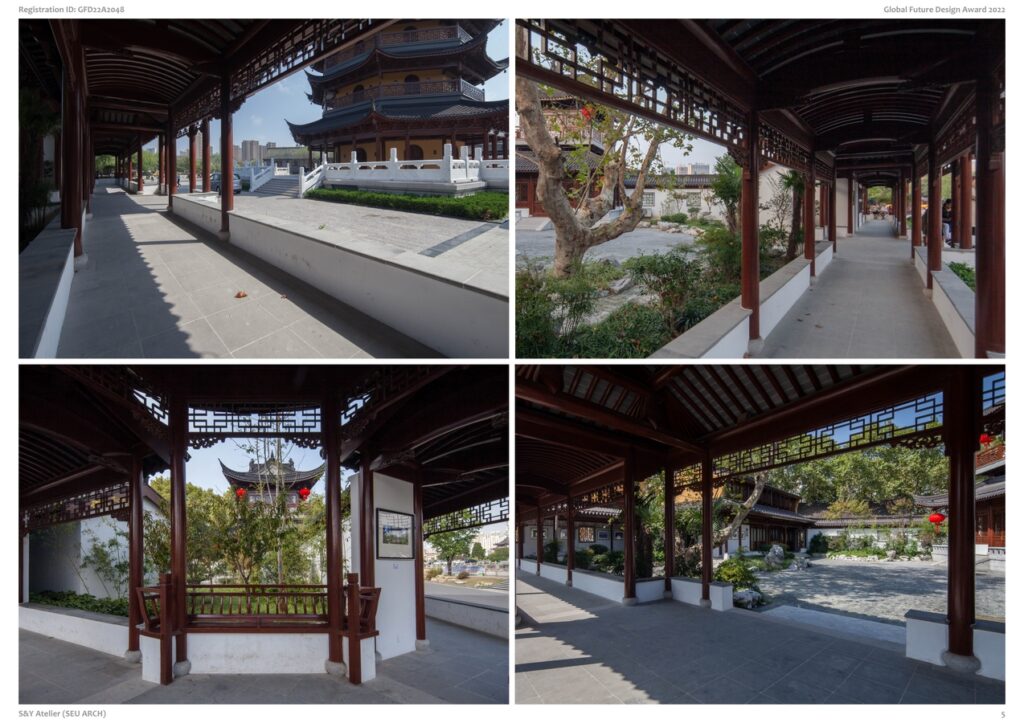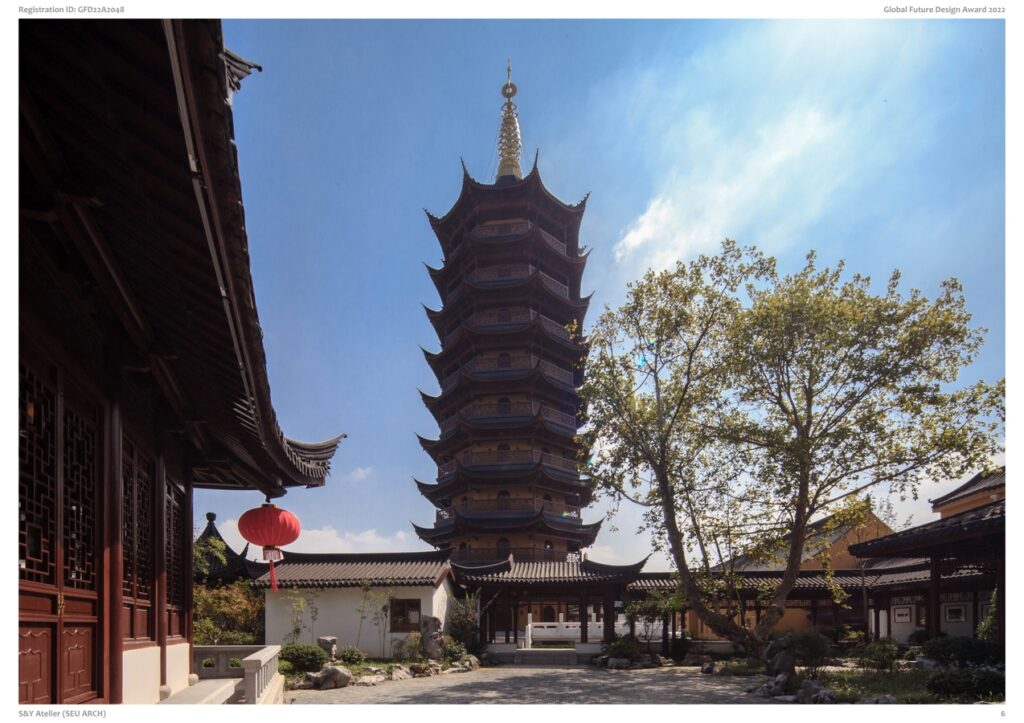This project is a reconstruction of a courtyard for Ciyun Monastery Guoshi Pagoda along the Jing-Hang Grand Canal (Huai’an Section), a UNESCO World Heritage site. Based on an assessment of the historical urban landscape, the restoration is valuable for understanding the significance of both the monastery and the pagoda in the urban environment.
Global Future Design Awards 2023: Entries Open!
Gold 🏆 Winner
Global Future Design Awards 2022
Pagoda Courtyard along the Grand Canal
Public Landscape Architecture (Built)
Firm
S&Y Atelier (SEU ARCH)
Architect/Designer
SHEN Yang, YU Haiyang
Design Team
LANG Yecheng, XIE Bing, JIA Tingli, XU Chunning, LU Qin
Location
Huai’an City, Jiangsu Province, China
Country
China
Photographer/Copyright
©XU Haohao
Historically, many cultural and religious buildings have been situated on both sides of the Grand Canal. Among them, the area of the Ciyun Monastery is well-structured and orderly, which sits on the south bank of the canal, Guoshi Pagoda which was rebuilt in the early 21st century is at the end of the central axis. The pagoda is an important landmark along the canal, and how to fully display its multiple functions is a critical design challenge. Furthermore, several buildings and an old plane tree on the courtyard site present added difficulties for this project.
Reading and presenting from the holistic view of the urban landscape is an effective strategy to understand value and develop design. The pagoda has multi-faceted relations of water supply, cultural atmosphere, and society with both Huai’an City and the canal. With the canal as the pulse that brought in the five main religions of the city which include Confucianism, Muslim Catholic, Taoism, and Buddhism, the close interactions brought about by the Grand Canal promotes intermixing and tolerance. In response to the changes of the city after its addition to the World Heritage List, it has transformed from a temple belonging to the monastery to one belonging to the people.
The courtyard is introduced to divide the irregular plot and form an open urban space that faces the canal and wharf. It’s organized by the original plane trees and the key landscape elements of pavilion, room, and corridor, resulting in the creation of the riverside of a harmony atmosaphere between the courtyard and pagoda.
Considering cultural heritage from the perspective of urban landscape is conducive to better understanding the wisdom and logic of traditional design and construction. It also contributes to improved historical preservation that aligns with the development requirements of the city where the site is located.


